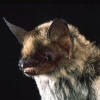
|
|
Antrozous pallidus -- Pallid bat |

|
|
Antrozous pallidus -- Pallid bat, closeup |

|
|
Choeronycteris mexicana -- Mexican long-tongued bat |

|
|
Corynorhinus townsendii -- Townsendís big-eared bat |

|
|
Eptesicus fuscus -- Big brown bat |

|
|
Idionycteris phyllotis -- Allenís big-eared bat |

|
|
Idionycteris phyllotis -- Allenís big-eared bat, closeup |

|
|
Lasiurus blossevillii -- Western red bat |
|
|
|
Lasiurus blossevillii -- Western red bat, closeup |

|
|
Lasiurus cinereus -- Hoary bat |

|
|
Lasionycteris noctivagans -- Silver-haired bat |

|
|
Lasiurus xanthinus -- Desert yellow bat |

|
|
Leptonycteris yerbabuenae -- Lesser long-nosed bat |

|
|
Myotis auriculus -- Southwestern myotis |

|
|
Myotis californicus -- California myotis |

|
|
Myotis melanorhinus -- Dark-nosed small-footed myotis |

|
|
Myotis occultus |

|
|
Myotis thysanodes -- Fringed myotis |

|
|
Myotis velifer -- Cave myotis |

|
|
Myotis volans -- Long-legged myotis |

|
|
Myotis volans -- Long-legged myotis, closeup |

|
|
Nyctinomops macrotis -- Big free-tailed bat |

|
|
Nyctinomops macrotis -- Big free-tailed bat, closeup |

|
|
Tadarida brasiliensis -- Mexican free-tailed bat |

|
|
Pipistrellus hesperus -- Western pipistrelle |